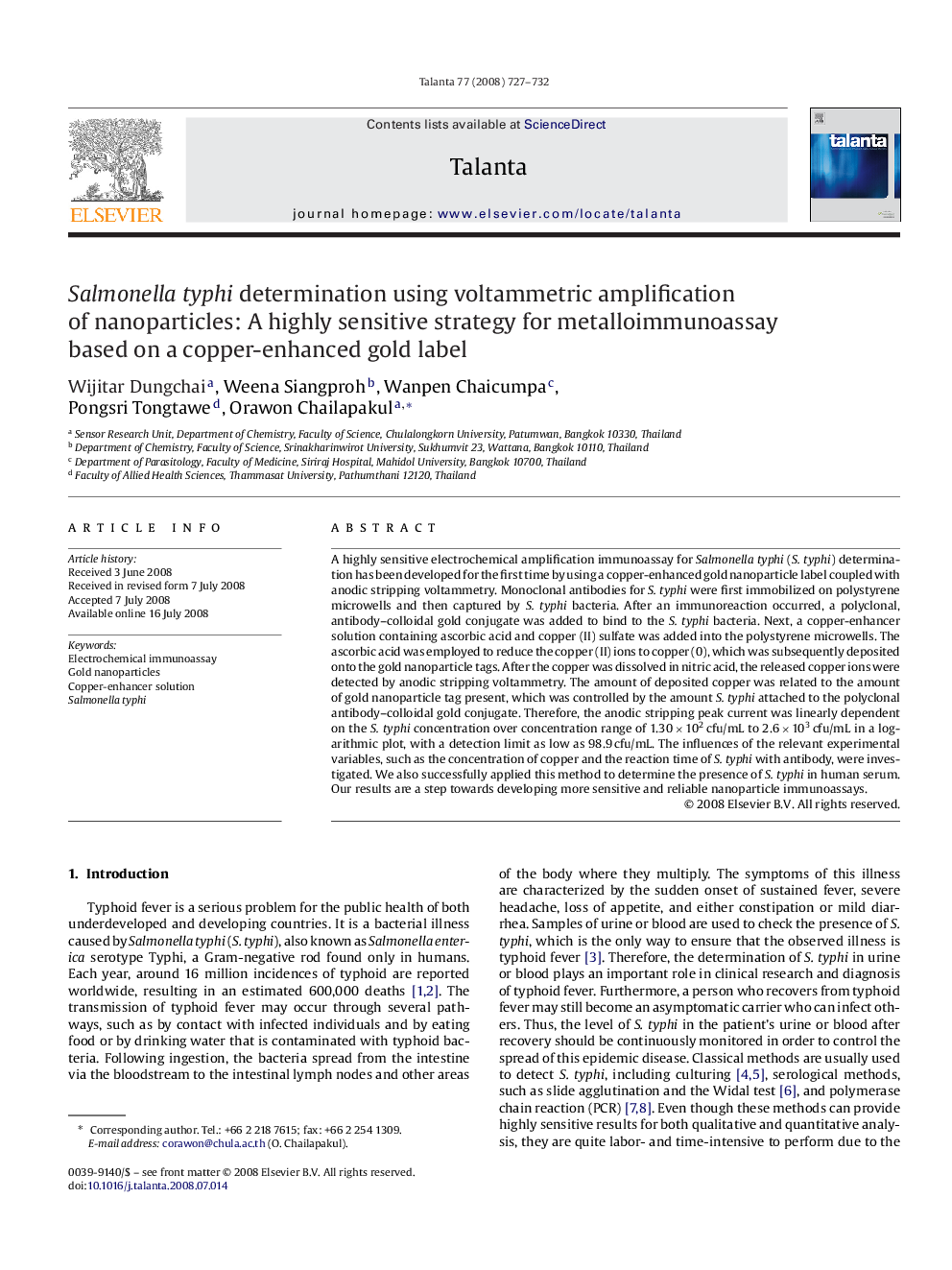| Article ID | Journal | Published Year | Pages | File Type |
|---|---|---|---|---|
| 1243127 | Talanta | 2008 | 6 Pages |
A highly sensitive electrochemical amplification immunoassay for Salmonella typhi (S. typhi) determination has been developed for the first time by using a copper-enhanced gold nanoparticle label coupled with anodic stripping voltammetry. Monoclonal antibodies for S. typhi were first immobilized on polystyrene microwells and then captured by S. typhi bacteria. After an immunoreaction occurred, a polyclonal, antibody–colloidal gold conjugate was added to bind to the S. typhi bacteria. Next, a copper-enhancer solution containing ascorbic acid and copper (II) sulfate was added into the polystyrene microwells. The ascorbic acid was employed to reduce the copper (II) ions to copper (0), which was subsequently deposited onto the gold nanoparticle tags. After the copper was dissolved in nitric acid, the released copper ions were detected by anodic stripping voltammetry. The amount of deposited copper was related to the amount of gold nanoparticle tag present, which was controlled by the amount S. typhi attached to the polyclonal antibody–colloidal gold conjugate. Therefore, the anodic stripping peak current was linearly dependent on the S. typhi concentration over concentration range of 1.30 × 102 cfu/mL to 2.6 × 103 cfu/mL in a logarithmic plot, with a detection limit as low as 98.9 cfu/mL. The influences of the relevant experimental variables, such as the concentration of copper and the reaction time of S. typhi with antibody, were investigated. We also successfully applied this method to determine the presence of S. typhi in human serum. Our results are a step towards developing more sensitive and reliable nanoparticle immunoassays.
